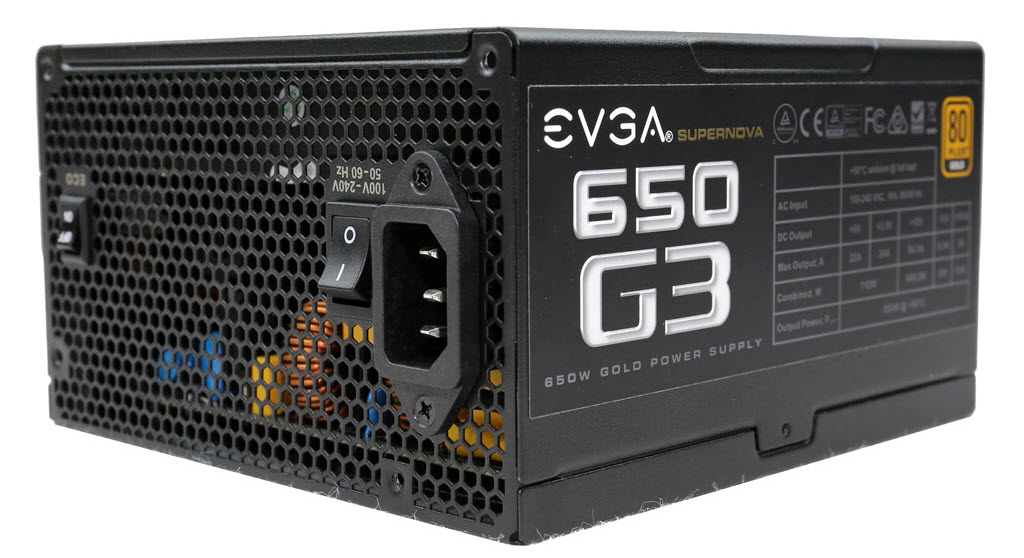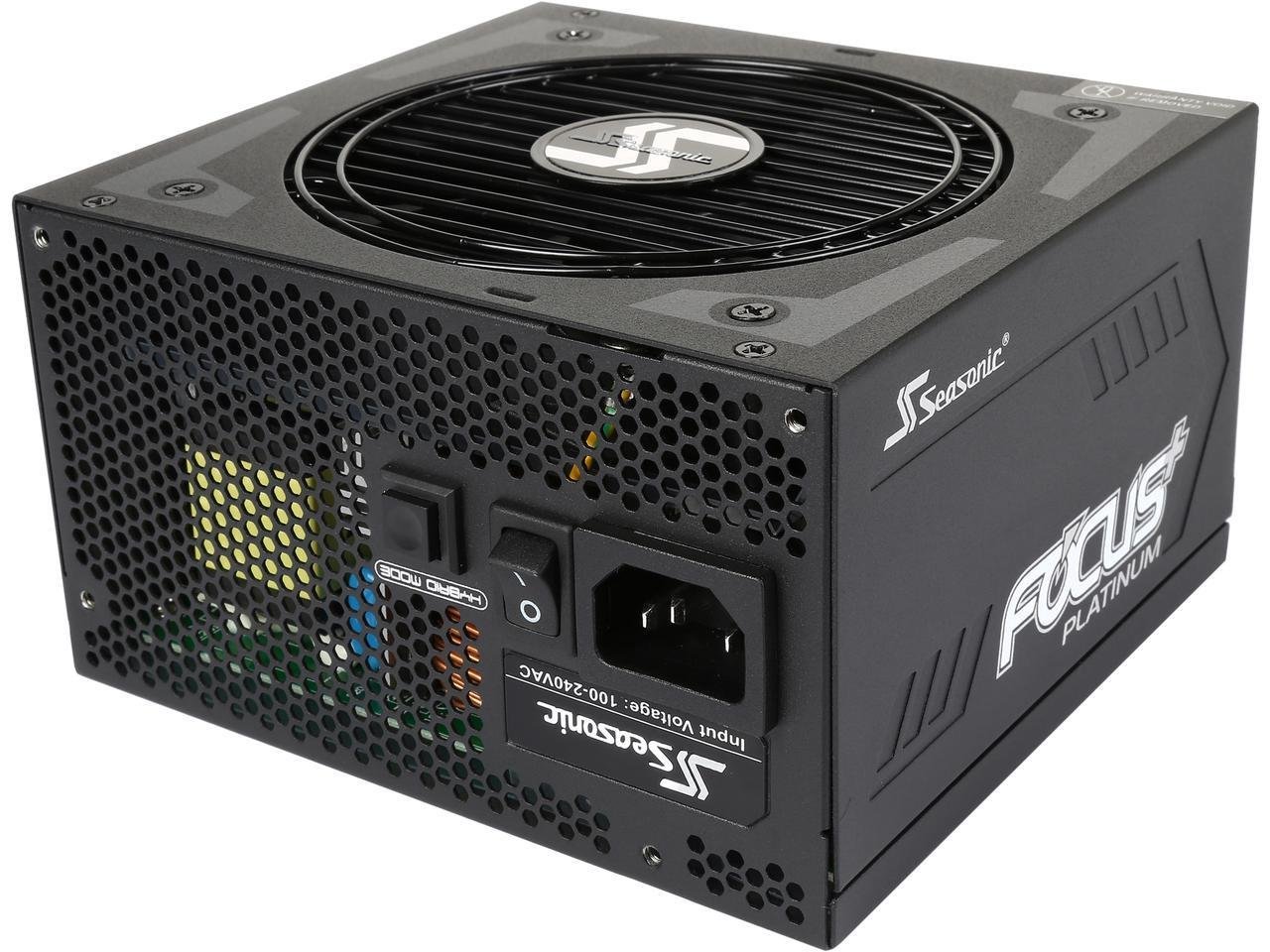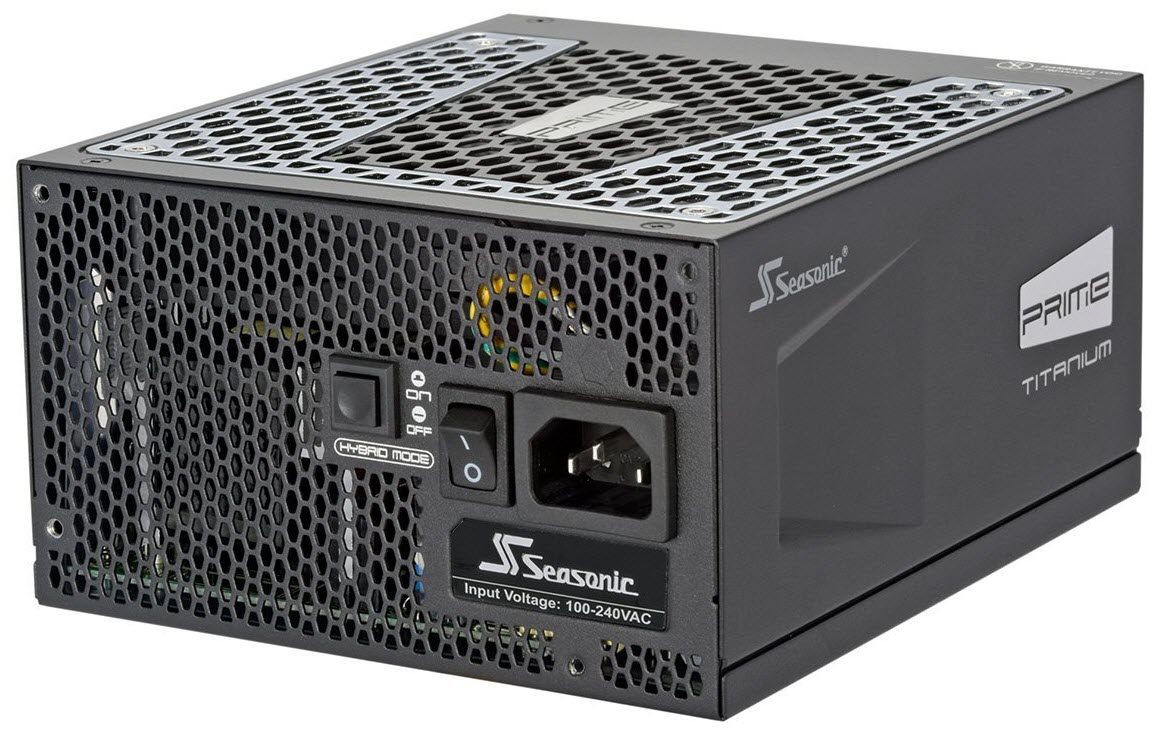Seasonic SSR-650PX PSU Review: High Performance Without Breaking The Bank
Why you can trust Tom's Hardware
Load Regulation, Hold-Up Time & Inrush Current
To learn more about our PSU tests and methodology, please check out How We Test Power Supply Units.
Primary Rails And 5VSB Load Regulation
Load Regulation testing is detailed here.
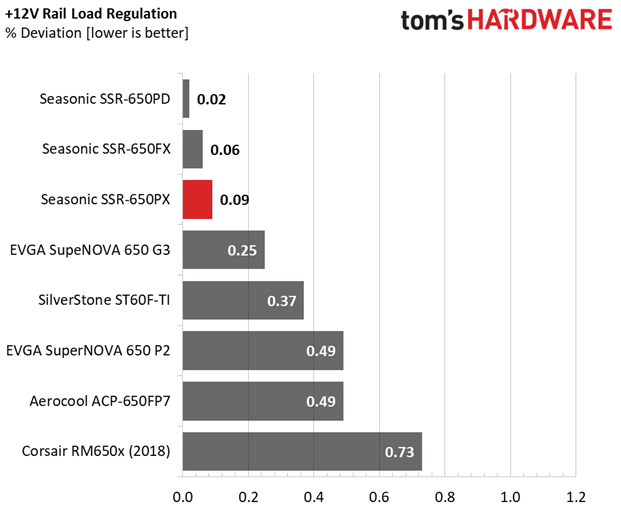
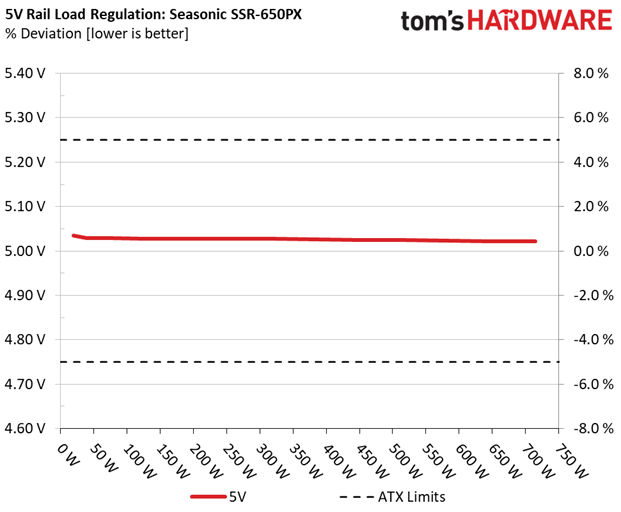
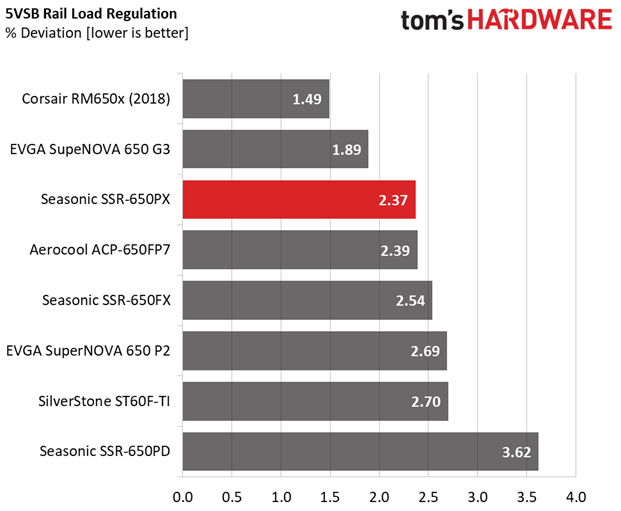
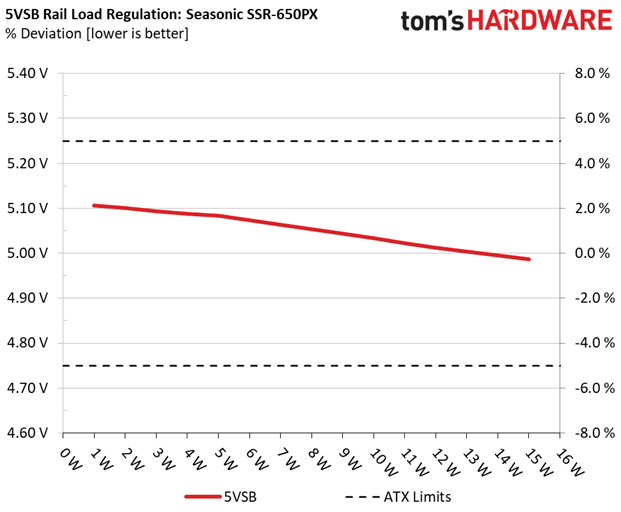

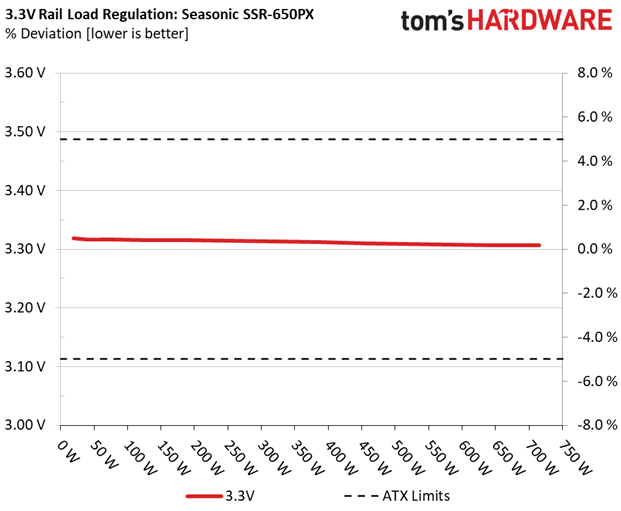
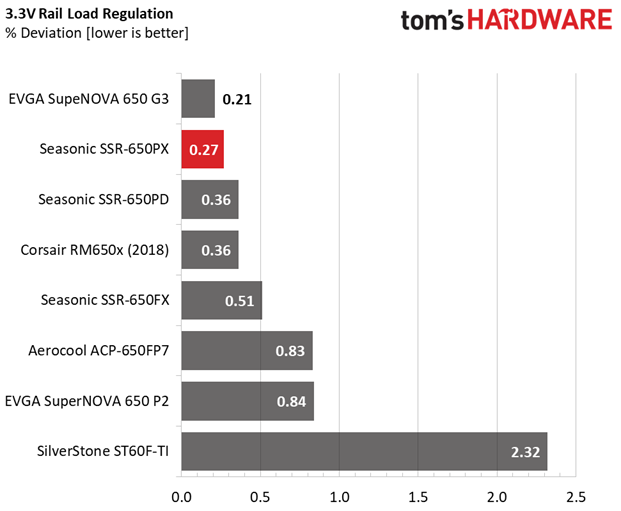

Hold-Up Time
Our hold-up time tests are described in detail here.
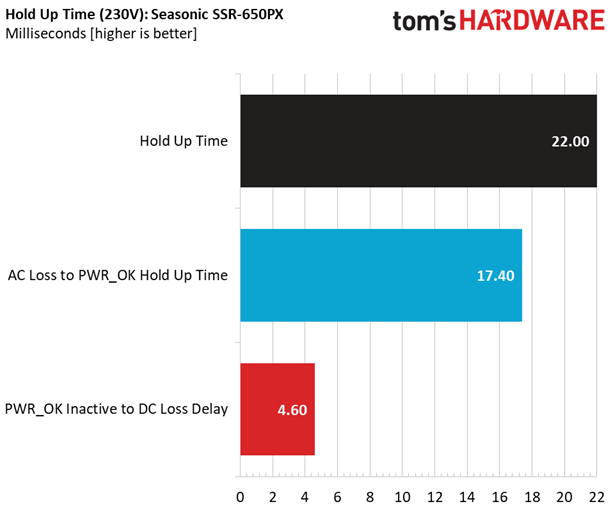
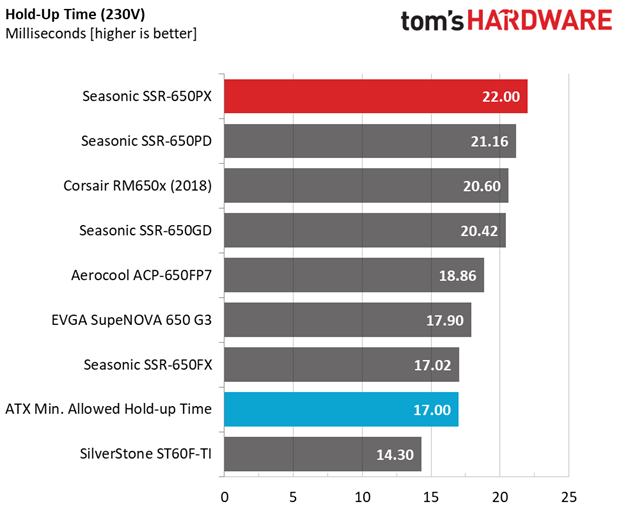
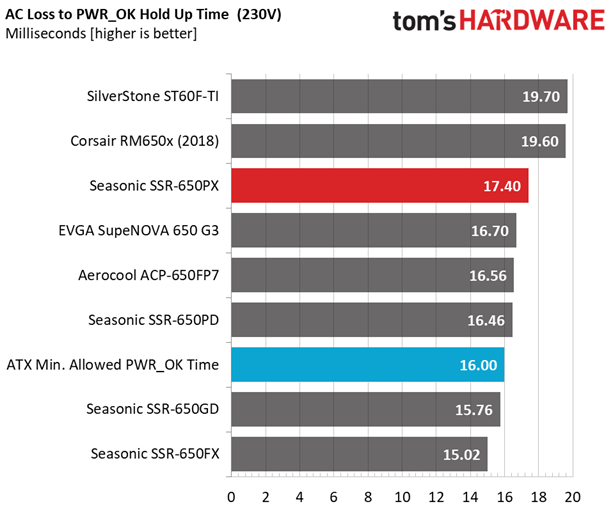
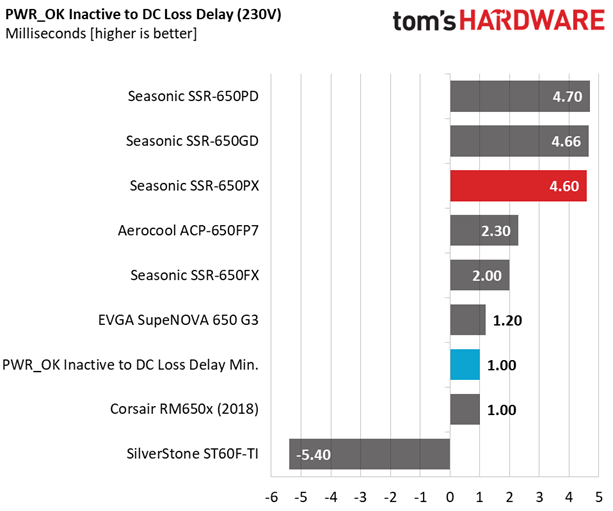
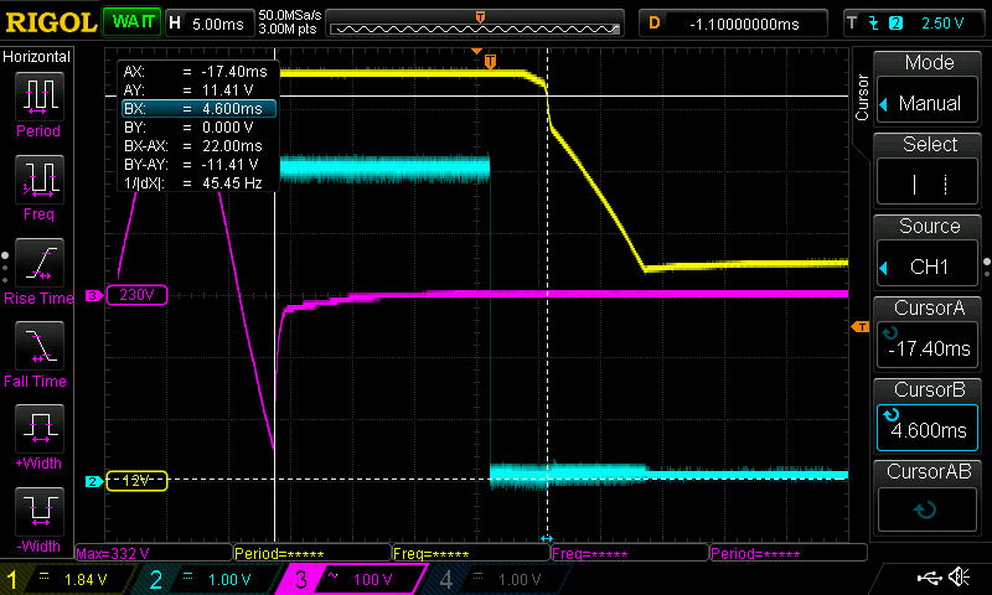
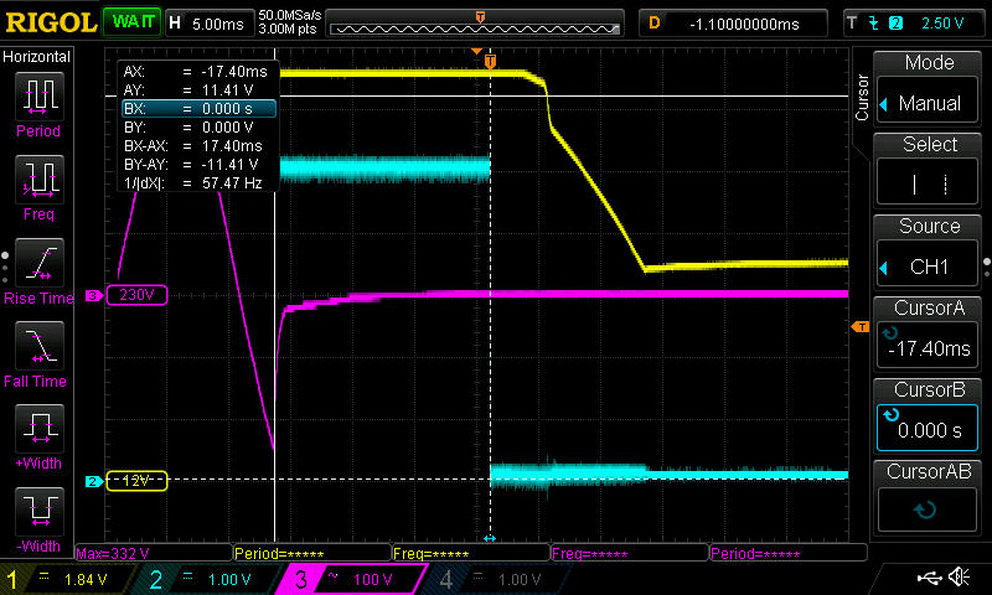
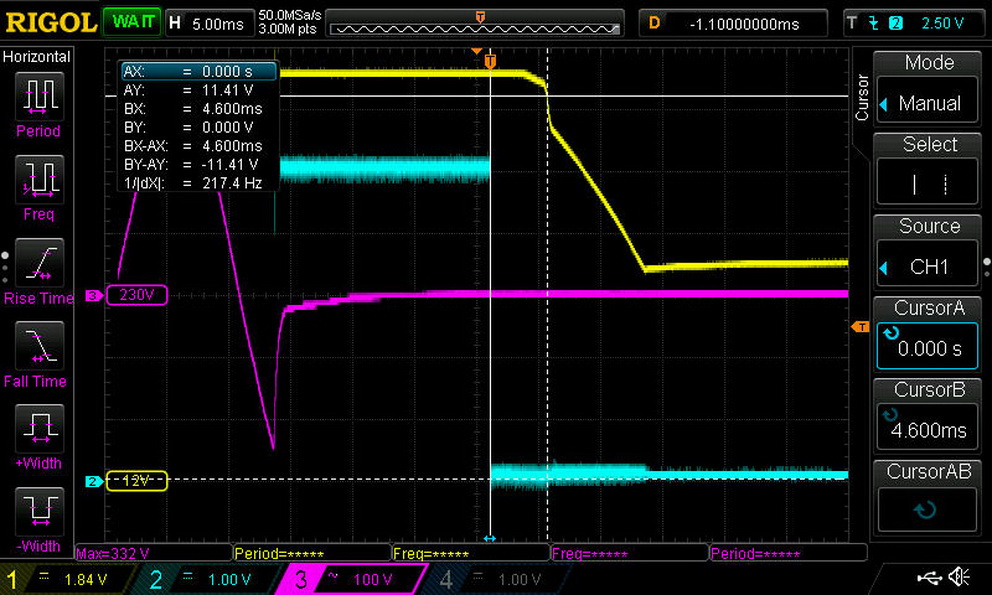
The hold-up time we measured is long enough, and the power-good signal exceeds 16ms. Plus, it's accurate. We have nothing more to ask for in this test.
Inrush Current
For details on our inrush current testing, please click here.
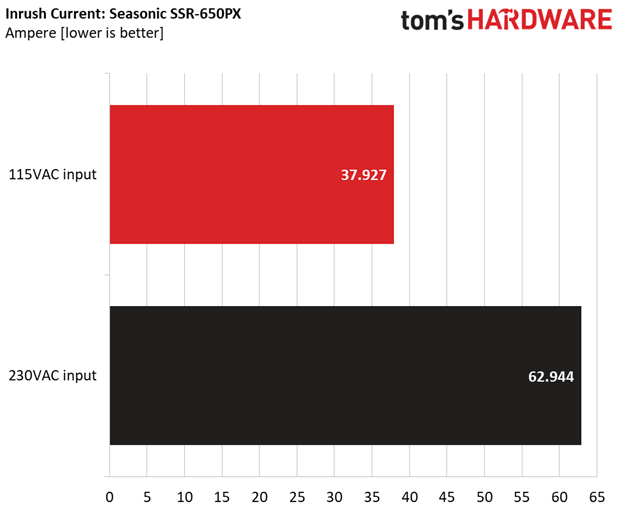
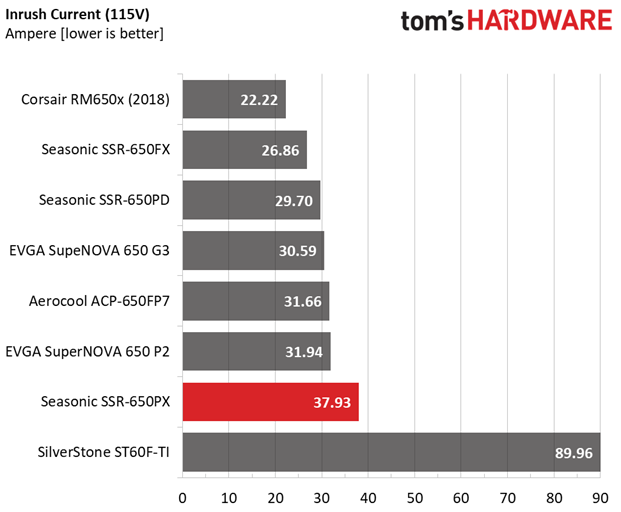
Inrush current is a bit high with both voltage inputs, though it shouldn't create any problems.
Load Regulation And Efficiency Measurements
The first set of tests reveals the stability of the voltage rails and the SSR-650PX’s efficiency. The applied load equals (approximately) 10 to 110 percent of the PSU's maximum load in increments of 10 percentage points.
Get Tom's Hardware's best news and in-depth reviews, straight to your inbox.
We conducted two additional tests. During the first, we stressed the two minor rails (5V and 3.3V) with a high load, while the load at +12V was only 0.1A. This test reveals whether a PSU is compatible with Intel's C6/C7 sleep states or not. In the second test, we determined the maximum load the +12V rail could handle with minimal load on the minor rails.
| Test # | 12V | 5V | 3.3V | 5VSB | DC/AC (Watts) | Efficiency | Fan Speed | PSU Noise | Temps (In/Out) | PF/AC Volts |
|---|---|---|---|---|---|---|---|---|---|---|
| 1 | 3.557A | 1.984A | 1.989A | 0.984A | 64.736 | 86.050% | 0 RPM | <6.0 dB(A) | 45.47°C | 0.958 |
| 12.134V | 5.029V | 3.316V | 5.084V | 75.231 | 38.02°C | 115.29V | ||||
| 2 | 8.107A | 2.983A | 2.985A | 1.183A | 129.267 | 89.991% | 0 RPM | <6.0 dB(A) | 46.33°C | 0.979 |
| 12.134V | 5.028V | 3.315V | 5.074V | 143.644 | 38.38°C | 115.20V | ||||
| 3 | 13.051A | 3.481A | 3.470A | 1.382A | 194.391 | 90.999% | 0 RPM | <6.0 dB(A) | 47.30°C | 0.987 |
| 12.136V | 5.028V | 3.315V | 5.064V | 213.620 | 38.77°C | 115.11V | ||||
| 4 | 17.994A | 3.976A | 3.983A | 1.583A | 259.599 | 91.212% | 485 RPM | 9.3 dB(A) | 39.00°C | 0.989 |
| 12.138V | 5.027V | 3.314V | 5.054V | 284.610 | 49.36°C | 115.12V | ||||
| 5 | 22.606A | 4.974A | 4.982A | 1.785A | 324.927 | 91.087% | 445 RPM | 9.6 dB(A) | 39.68°C | 0.990 |
| 12.139V | 5.027V | 3.313V | 5.044V | 356.722 | 51.37°C | 115.02V | ||||
| 6 | 27.154A | 5.970A | 5.977A | 1.987A | 389.451 | 90.764% | 795 RPM | 18.9 dB(A) | 40.03°C | 0.991 |
| 12.140V | 5.026V | 3.312V | 5.033V | 429.079 | 51.88°C | 114.92V | ||||
| 7 | 31.770A | 6.962A | 6.978A | 2.191A | 454.772 | 90.291% | 1155 RPM | 28.7 dB(A) | 41.34°C | 0.991 |
| 12.140V | 5.025V | 3.310V | 5.022V | 503.673 | 53.59°C | 114.94V | ||||
| 8 | 36.388A | 7.964A | 7.979A | 2.395A | 520.095 | 89.795% | 1670 RPM | 37.2 dB(A) | 42.84°C | 0.991 |
| 12.138V | 5.024V | 3.309V | 5.012V | 579.203 | 55.57°C | 114.84V | ||||
| 9 | 41.400A | 8.463A | 8.464A | 2.398A | 585.024 | 89.380% | 2005 RPM | 41.1 dB(A) | 43.86°C | 0.991 |
| 12.138V | 5.023V | 3.308V | 5.005V | 654.535 | 56.75°C | 114.74V | ||||
| 10 | 46.149A | 8.962A | 8.980A | 3.009A | 649.864 | 88.838% | 2025 RPM | 41.2 dB(A) | 45.29°C | 0.992 |
| 12.138V | 5.022V | 3.307V | 4.986V | 731.517 | 58.65°C | 114.63V | ||||
| 11 | 51.480A | 8.963A | 8.982A | 3.013A | 714.688 | 88.339% | 2035 RPM | 41.3 dB(A) | 46.57°C | 0.993 |
| 12.140V | 5.022V | 3.307V | 4.980V | 809.032 | 60.54°C | 114.64V | ||||
| CL1 | 0.738A | 12.001A | 12.001A | 0.000A | 109.074 | 86.604% | 445 RPM | 9.6 dB(A) | 43.65°C | 0.979 |
| 12.143V | 5.026V | 3.316V | 5.092V | 125.946 | 52.20°C | 115.21V | ||||
| CL2 | 54.012A | 1.002A | 1.000A | 1.000A | 668.978 | 89.315% | 2025 RPM | 41.2 dB(A) | 45.89°C | 0.992 |
| 12.138V | 5.024V | 3.308V | 5.039V | 749.007 | 59.16°C | 114.62V |
Load regulation at +12V and 3.3V is super tight. The 5V rail is at 2.37% though, which is decent compared to the competition, but nowhere close to the other rails' performance.
Up through our 30% load test the PSU's fan does not spin. In the next three tests it spins very slowly. The fan's noise becomes noticeable around test number eight, where we push this power supply hard in a 43°C ambient environment. Worst-case, we measure up to 41.3 dB(A). Fortunately, the SSR-650PX has no problem operating under tough conditions, and its cooling fan does a good job of exhausting thermal energy (judging from the large delta between input and output temperatures).
With 20% load, the PSU's efficiency is only a hair away from 80 PLUS Platinum spec's minimum requirement. Under full load, it lands less than 0.2% away. Using a typical load (50%), though, the gap grows to almost 1%. Then again, we test under much hotter ambient conditions than the 80 PLUS organization, and heat has a notable effect on efficiency.
MORE: Best Power Supplies
MORE: How We Test Power Supplies
MORE: All Power Supply Content
Current page: Load Regulation, Hold-Up Time & Inrush Current
Prev Page Teardown & Component Analysis Next Page Efficiency, Temperature & Noise
Aris Mpitziopoulos is a contributing editor at Tom's Hardware, covering PSUs.
-
DookieDraws I won't put anything in my builds, or builds I do for others, other than a Seasonic PSU. Used them for years and have never had any issues. Not saying there isn't any other reliable brands out there, as I know there are, but I'm sticking with what has worked for me.Reply -
mlee 2500 What a Coincidence! I bought this very same Seasonic 650PX Power Supply and just last night finally took it out of the box to prep for my new build...and here I find a review for it!!Reply
The author makes an excellent point that a 2nd modular EPS cable really should be standard these days. With motherboards now supporting USB 3.1, integrated WiFi, a whole slew of 2A fan/pump connectors and tons of other power-drawing features which hardly even existed a decade ago, a second EPS is quickly becoming the norm rather then the exception.
In my case, with the very popular ASrock Taichi Z series motherboards which requires three connectors (1x24, 1x8, 1x4), I need to obtain a second additional 8pin to 2x4 modular cable. I just happened to contact Seasonic about that not an hour before seeing this review and learned that www.btosinte.com is their approved distributor and that such a cable costs about $5.00
If you do need to buy an additional EPS cable, BE SURE TO GET THE ONE WITH THE INLINE CAPACITOR, for the newer SSR series!!
It was interesting to learn from this article that providing a second EPS cable isn't really typical for most vendors 650W power supplies, which makes me feel better about being in that predicament with Seasonic. I was initially a bit disappointed, but then I've never had a Desktop mobo which required so many connectors before.
All that being said this appears to be an outstanding power supply, a great value, and given that my previous modular Seasonic Power Supply is still running great after more then 6 years, I remain a Seasonic customer until proven I shouldn't be. -
Aris_Mp I am insisting for quite some time for a second EPS connectors in high-end PSUs and your post clearly shows why. Thank you!Reply
